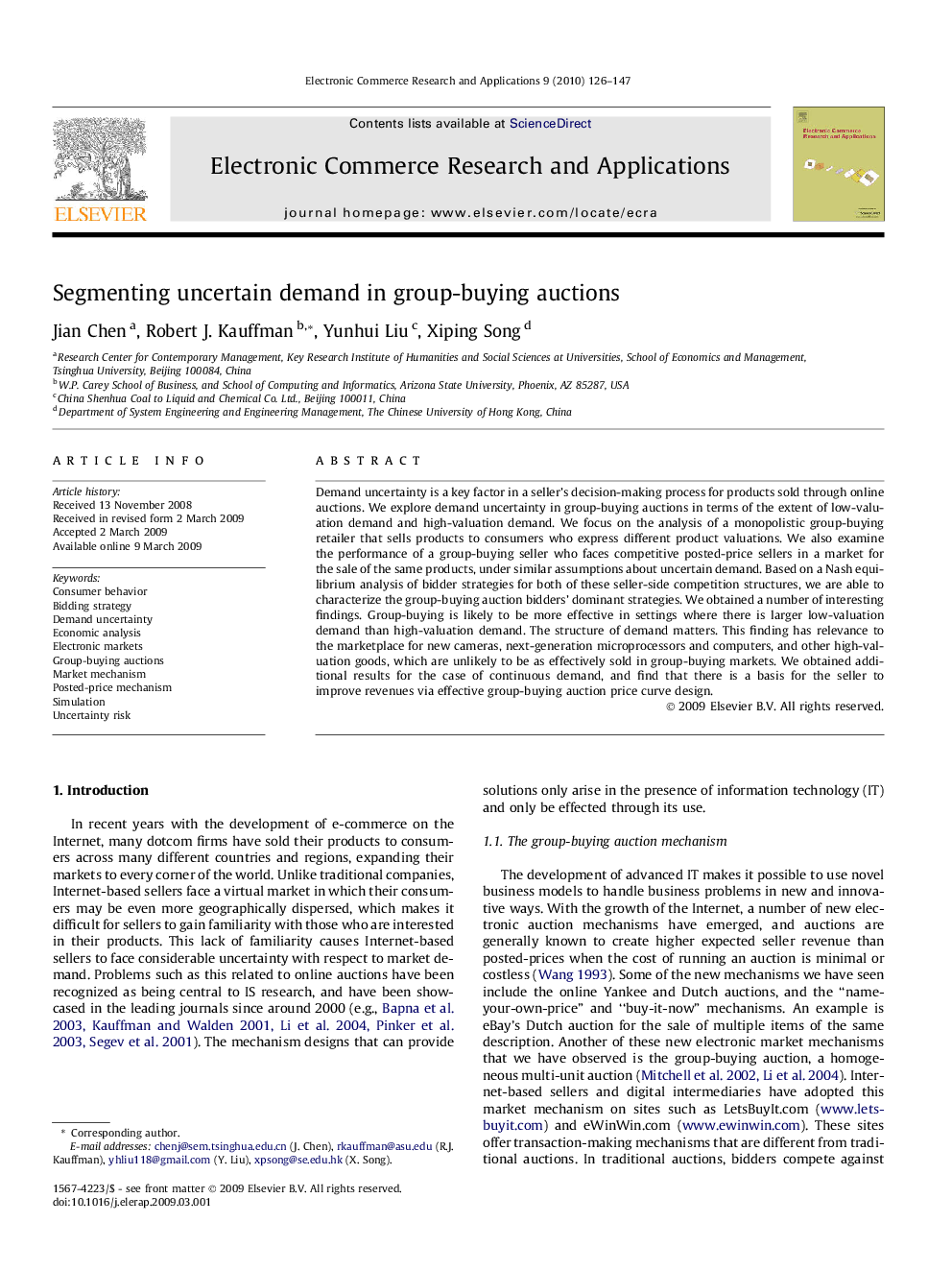| Article ID | Journal | Published Year | Pages | File Type |
|---|---|---|---|---|
| 379921 | Electronic Commerce Research and Applications | 2010 | 22 Pages |
Demand uncertainty is a key factor in a seller’s decision-making process for products sold through online auctions. We explore demand uncertainty in group-buying auctions in terms of the extent of low-valuation demand and high-valuation demand. We focus on the analysis of a monopolistic group-buying retailer that sells products to consumers who express different product valuations. We also examine the performance of a group-buying seller who faces competitive posted-price sellers in a market for the sale of the same products, under similar assumptions about uncertain demand. Based on a Nash equilibrium analysis of bidder strategies for both of these seller-side competition structures, we are able to characterize the group-buying auction bidders’ dominant strategies. We obtained a number of interesting findings. Group-buying is likely to be more effective in settings where there is larger low-valuation demand than high-valuation demand. The structure of demand matters. This finding has relevance to the marketplace for new cameras, next-generation microprocessors and computers, and other high-valuation goods, which are unlikely to be as effectively sold in group-buying markets. We obtained additional results for the case of continuous demand, and find that there is a basis for the seller to improve revenues via effective group-buying auction price curve design.
